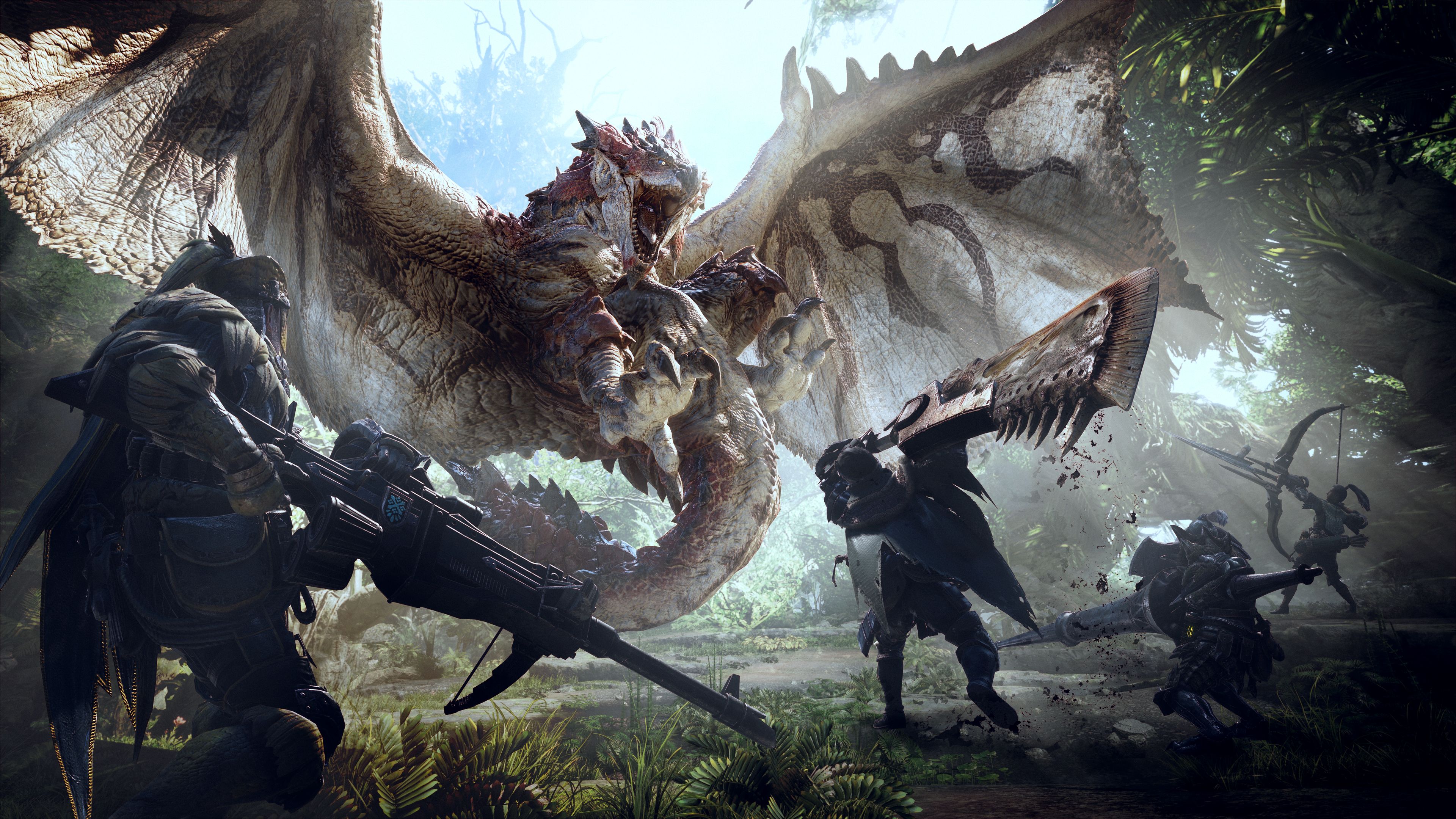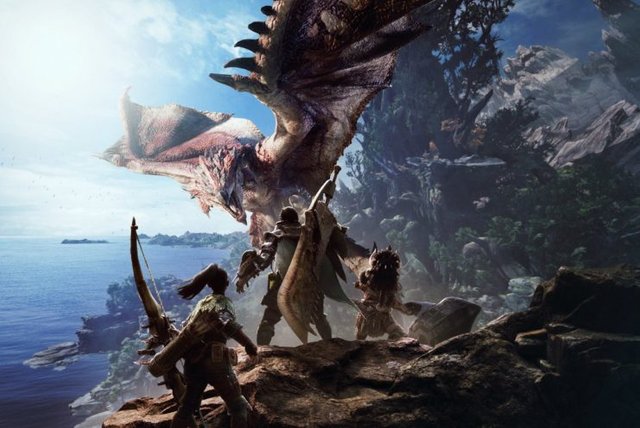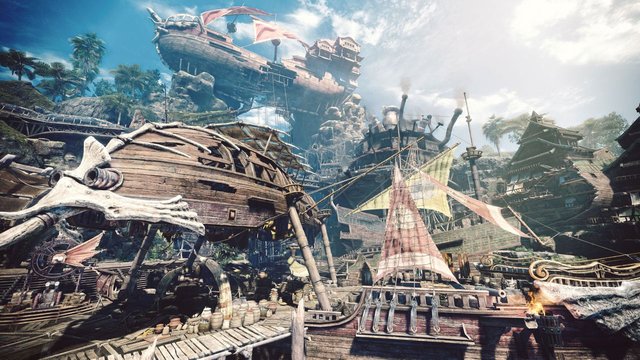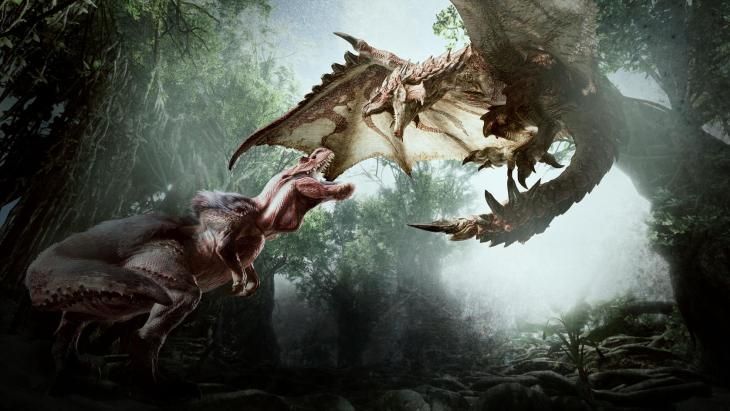Monster Hunter: World hands-on Preview - More accessible, yet more complex
The Monster Hunter franchise is extremely popular in Japan. This began, like many other Japanese titles, on a console (on PlayStation 2, 13 years ago), but had its greatest successes on the PlayStation Portable and Nintendo 3DS - with occasional stopovers on the consoles, though they were often aftermath. With Monster Hunter: World , Capcom brings a full-fledged Monster Hunter experience to today's consoles around the world and finally seems to be a real attempt to appeal to a broader Western audience.
We could experience a turbulent attack in the New World, created our own character, could walk around in the main camp of Astera where the Research Commission hopes to learn more about Elder Dragons and, as you expect, "research" here means killing monsters and collect their remains.
There was also a second possibility that we could experience Monster Hunter: World, namely the beta on PlayStation 4. It consisted of three quests in two regions (Ancient Forest and Wildspire Waste), with content previously available at events such as Gamescom and Tokyo Game Show. In such a way, they missed the introduction we did when we played the game from the beginning and if you are new to the series, the abundance of options, concerning the equipment and objects, can seem overwhelming and difficult (even if it is only a fraction of the depth in the entire game). However, you can assume that the game will eventually introduce you more gradually to its possibilities.
One thing that has to be said right away is that Capcom has put a lot of effort into making the game more accessible, while the complexity and foundation of Monster Hunter is still present. This is a game where you quickly realize that there is a lot to learn, not just about the game mechanics and objects, but also about the world.
The means to make a character offer quite deep adjustment possibilities and it is hard to imagine that you encounter a player who looks exactly the same as you. At first glance the options may seem somewhat limited, but next to the 'templates' every category can be adjusted. You can also adjust things like expressions and voices (although we did not hear much from our character). Of course, your feline companion, Palico, can also be adjusted.
After an opening film, which we will not reveal, you end up on the new continent and in the hub city of Astera where the Research Commission set up their camp.
The place reminded us of an Ewok village. The Commission has high expectations and you can immediately start while you get a tour of Astera. Here you have your own home and there are a number of locations to visit such as the Cantina, the Smithy, shops and the ever-important quest sign. Speaking of quests, once you pick one you will be taken out of the camp to start. Everything in the game can be played both alone and in multiplayer and you can form a team before a quest or fire a 'flare' if you only get into trouble, after which helpful hunters in the neighborhood can help you. It is a flexible design and given the complexity of some larger, later samples, this certainly comes in handy.
The overall setup takes us back in time, because Monster Hunter is in many ways the evolution of Phantasy Star Online - the first game we played online on a console at the dawn of this century. It is much more varied, deeper, but it still has some of those rigid, yet rhythmic battles and some of the same co-op dynamics. However, the "weak-strong" attacks of PSO are completely different here and you have to make the necessary effort to master the specific skills of each weapon. Our preference was for the more brutal options up close with the Great Sword, Long Sword and Switch Ax. We also spent some time with the Bowgun, but that may not be the best beginner's weapon. You should not only master the mechanism here, but also figure out which kind of ammunition is best for every animal.Monster Hunter offers more of a core experience is the lack of 'health' bars in the samples; you really have to study them and learn their weaknesses and strengths to get the best out of them. It is a learning process and if you are new to the series you have to prepare yourself to spend some time learning and developing strategies (or using Youtube to look this up).
At the core is Monster Hunter: World a class-less action rpg designed with co-op in mind. But although it does not contain classes, there are certainly many roles to play, a player can fulfill multiple roles and adapt to the situation. This creates a dynamic game where real teamwork and cooperation naturally arises from the requirements of a situation. The sixteen types of weapons offer enough different strategies. Add the five elements (Fire, Water, Lightning, Dragon, Ice) plus the behavior of the monsters and you have a complexity that requires you to act quickly. There has been a lot to do with the way monsters deal with each other in this game and we have seen some of them ourselves. Big monsters banging each other with their heads and during one of the quests even another beast ended up in the fight. How dynamic this is is still to be seen, although during our experience it seemed quite static and scripted (these conflicts took place at specific points during a quest). From what we have seen and experienced, however, there seems to be much more to discover in these regions besides the quests.
Tracking works through fireflies; a fairly simple system, perhaps even too accessible. We are, however, convinced that more advanced animals will require more effort to find them. By finding hints you can 'level' the flies and then lead you in the right direction. Later you can also track down specific samples using exploration flies, something that will certainly be useful if you are hunting for specific ingredients to 'craften'.
The beta of Monster Hunter: Worldis somewhat odd, with three animals to switch off: the Great Jagras (Ancient Forest), the Barroth (Wildspire Waste) and the = Anjanath (Ancient Forest). There were additional 'non-quest' beasts in the different environments and we fought hard on some Japanese players to eliminate a Diablos in Wildspire Waste (the Barroth got involved in the fight at a certain moment, what made for a spectacular scene). The Great Jagra quest is actually one of the first quests in the entire game, although the encounter in the beta is somewhat stripped. It is relatively intriguing to see some more advanced skills used as a relative newcomer to the series. Certain players performed several "rodeos"
Anyway, after having spent some time with Monster Hunter: World knowledge we can not wait for the game to appear and we can develop our hunting skills properly and really dive deep into the tactical gameplay that the game offers.
Thanks for reading.
My Latest Posts:
#The Legend of Zelda: Breath of the Wild Review - The Champions' Ballad
#Tricky Tower Review - The Creative Tetris!
#It's Quiz Time Review - Varied game rounds
#Ode Review - Musical discovery
#The most important: The Game Awards announcements - Did not see this coming!
#DOOM VFR (PS VR) Review - A clever piece of technology for PlayStation VR







How did you feel about the Scout Flies? I notice you only gave them a passing mention here.
At first I was annoyed at the hand holding the flies felt like they were providing. I certainly didn't need them pointing out where I could find various forage-able resources. But then during the heat of the quest, when the timer was ticking down, and the Anjanath had knocked me out, I found that the Scout Flies were invaluable at navigating the unfamiliar terrain and getting me back into the battle. At least until they started showing me where some herbs were when all I wanted to do was get back into the battle...
This post has received a 0.31 % upvote from @drotto thanks to: @banjo.